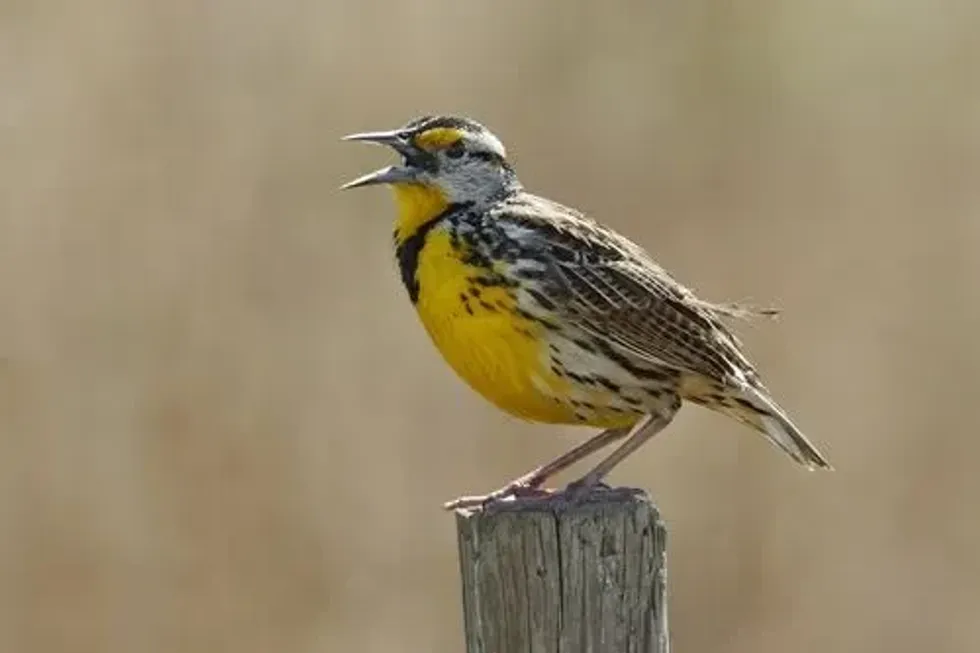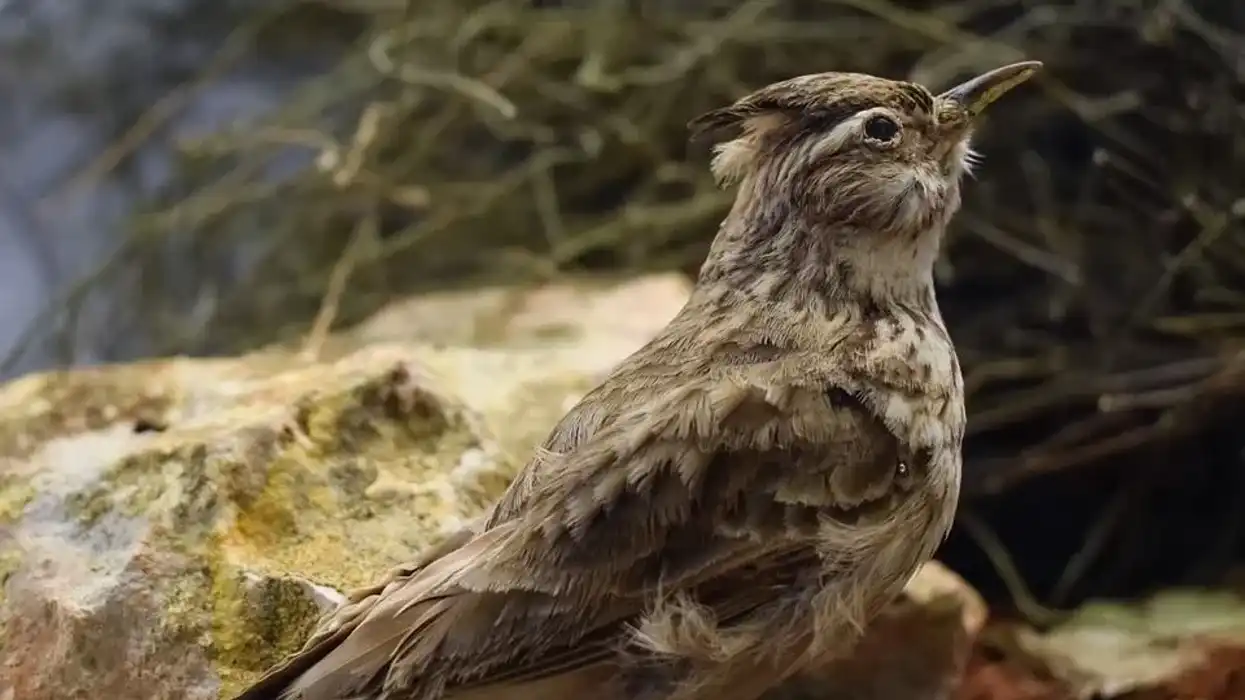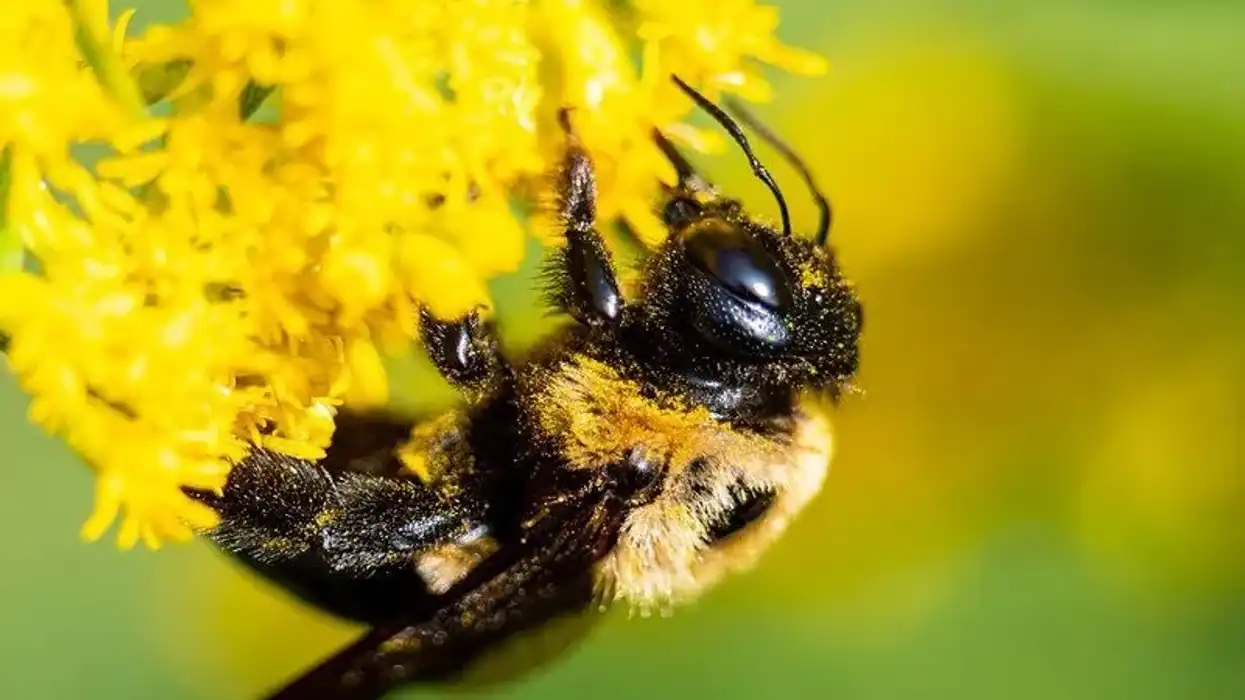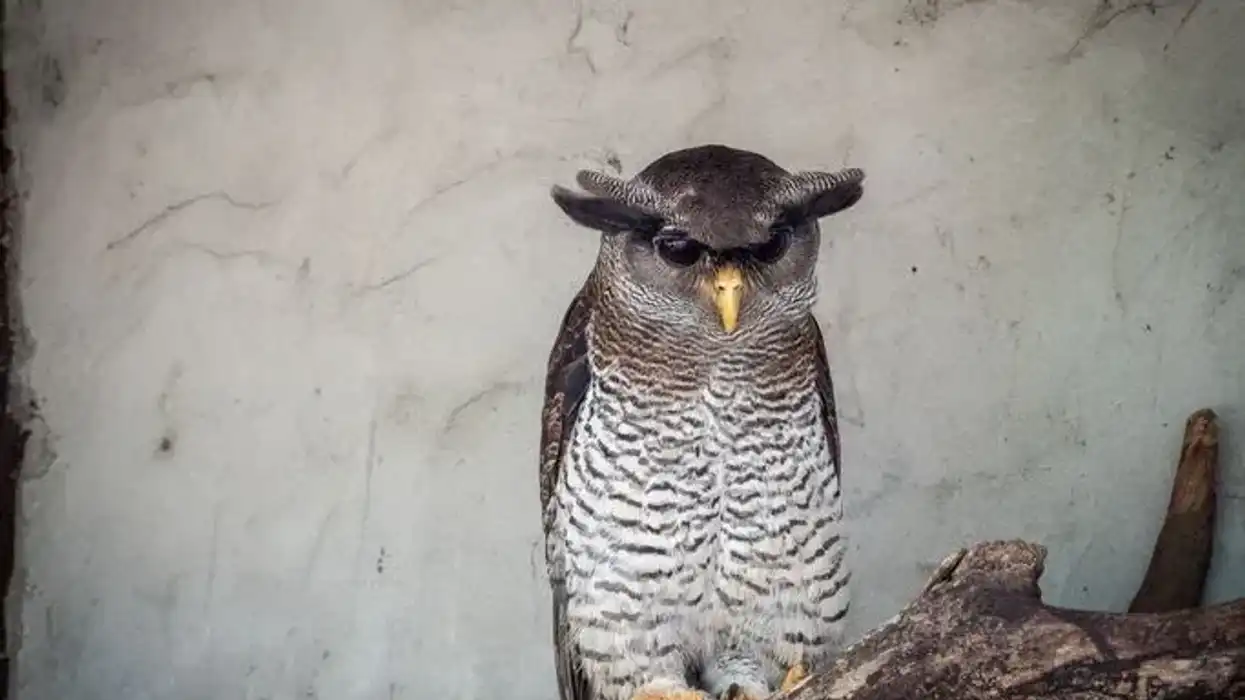Eastern meadowlark Sturnella magna is a unique species of bird native to the eastern part of America. The eastern meadowlark bird is often confused with the western meadowlark since they are similar in appearance however they are different species of birds.
The eastern meadowlark range is limited to certain parts alone and seen in eastern and central parts of America. The adult male birds can sing beautifully and both birds communicate via sounds and calls.
Eastern meadowlark sound is unique and easily identifiable, they give a sharp 'dzert' note when intruders are seen in their space. Apart from this, they communicate via calls as well.
They are shy diurnal birds and primarily feed on insects. A decline in the eastern meadowlarks population has been seen from the 1960s to the 1990s majorly due to habitat loss caused by deforestation and rapid urbanization.
This article will take a look at some fun and interesting facts about these unique species. If you liked this article please do visit bowerbird and secretary bird.
Eastern Meadowlark Interesting Facts
What type of animal is a eastern meadowlark?
Eastern meadowlark sturnella magna is a type of bird species animal. Eastern meadowlarks are a species that is at risk.
What class of animal does a eastern meadowlark belong to?
Eastern meadowlark classifies under the head Aves and is a type of bird that belongs to the Icteridae family and order Passeriformes.
How many eastern meadowlarks are there in the world?
The eastern meadowlarks are a declining species. Between 1966 and 2015, the population fell over three percent. This is majorly due to loss of habitat, deforestation, and rapid urbanization.
Where does a Eastern meadowlark live?
The eastern meadowlark is found in eastern grasslands in North America, pastures, agricultural fields, and other grassy areas. When it flushes from the grass they usually flash their tail feathers.
They do not stay at all times in eastern North America and can be found in various other grassy regions where they tend to overlap with other ranges of birds like the western eastern meadowlark.
What is a Eastern meadowlark's habitat?
The eastern meadowlark habitat is in eastern grasslands and old field habitats in North America. They are suited to farmlands, especially where tall grasses are allowed to grow.
They have diurnal migration and move 620 miles. Spring arrival depends on snowmelt, usually by march-April and movements peak by September-October. These birds are also found in Arizona, Colorado, North Dakota, and Manitoba since they accommodate this particular habitat.
Who do Eastern meadowlarks live with?
Since they reside in grasslands, they are surrounded by their species as well as other insects, birds, and animals in the forests, some of whom they prey on and some of whom these birds are prey to. The eastern meadowlark is prey to snakes.
How long does a Eastern meadowlark live?
An eastern meadowlark has a lifespan of a maximum of ten years. The oldest eastern meadowlark recorded was eight years and eight months. This bird was banded in Pennsylvania in the year 1926 and shot in North Carolina in 1935.
How do they reproduce?
Male eastern meadowlarks are polygynous in nature and can have two to three mates. Both male and female birds have a series of weet calls that they give while in flight.
The eastern meadowlark lay a nest on the ground before breeding. Creating the nest is the female meadowlark's responsibility, and they do so by finding small depressions in the ground, which is well concealed by dense vegetation.
This process takes four to eight days. Post mating, the female has a nestling period of 10-12 days after which she lays two to seven eggs.
They have one to two broods and give birth to small eggs whose length is 0.9inch-1.2 in, and width is 0.7-0.9 cm and looks white with variable speckle and spots. Post hatching, the egg changes into a baby bird and looks pinkish with closed eyes at the time of hatching.
What is their conservation status?
The eastern meadowlark is not endangered but is classified as a near-threatened category by the International Union For Conservation Of Nature (IUCN). It's essential to invest in initiatives that support bird conservation to ensure these birds get enough resources to help them sustain and recover the species.
Eastern Meadowlark Fun Facts
What do Eastern meadowlarks look like?
You need keen eyesight to spot this species of bird since they are often confused between similar species of birds like the western meadowlark, although they are different. Their eye color is usually brown.
These birds are brown above and yellow below and have a distinctive black 'V' on their breast and white flanks. On the ground, their upper parts, which are brown in color, helping them to camouflage themselves from possible predators. The wings appear short and spiky tail when in flight, which measures 2.1-3.4 in.
The bird spreads their tail widely and flicks its wings. They may even jump given that they reside on grasslands.

How cute are they?
They are wild birds; however, their colorful appearance and small stature make them incredibly cute to watch. They have extensive white color on their tail. Larks are known for their melodious songs. These birds sing even when they fly, unlike other birds. Meadowlarks symbolize abundance and impending harvest in many traditional cultures.
How do they communicate?
The eastern meadowlark communicates primarily through songs and calls. Sound communication consists of three to five flutelike whistles, which gradually drop the pitch and last up to two seconds long.
These songs are of different types, and males sing different songs depending on the need, which can be both in flight or while resting. The second form of communication is a call which is usually a sound and is a sharp 'dzert' note which is loud and clear to all who hear it.
This is mostly done when they are in a position of threat or in the presence of intruders. A distinct chatter too, can be heard is at times by both males and females.
How big is a Eastern meadowlark?
Eastern meadowlarks are normally 14-16 in which is ten times bigger than the smallest bird in the world, the bee hummingbird which is 2.4 inch (6.1cm) tall.
How fast can a Eastern meadowlark fly?
Eastern meadowlarks fly is recorded at 40km/h. This is similar to other bird species like the quail and goose birds. They reside on grasslands mostly and have the capacity to increase or decrease their flight speed as per the need.
How much does a Eastern meadowlark weigh?
Eastern meadowlarks weigh 90-150 g which is about 3.2-5.3 oz. Both males and females of the species weigh more or less similar to each other and are also similar in appearance.
What are their male and female names of the species?
Eastern meadowlark females and males do not have different names. However, they vary in reproductive functions and also in their sound patterns; males have the capability to sing beautifully.
What would you call a baby Eastern meadowlark?
Baby eastern meadowlark is referred to as an egg when it's inside the shell, and once they hatch, they are referred to as offsprings of the bird that reside in the eastern meadowlark nest until they develop wings and feathers and are ready to fly and explore grass and grassy areas, as well as the sky.
What do they eat?
The Eastern meadowlark diet consists of insects, including grasshoppers, caterpillars, crickets. Primarily apart from this, they also eat weed seeds, grass specifically during the winter season.
Eastern meadowlark female may feed more on insects specifically when during the nesting period and is responsible for feeding the nestlings. Male birds, too, feed nestlings as necessary.
They don't feed on sprouting grains ever, so make sure you avoid them if you install nest boxes for birds in your backyards to attract these birds. If they don't find insects elsewhere, they dig in the ground with the help of their beaks to expose the worms, which they can feed on and survive.
Are they aggressive?
These birds may be aggressive, specifically to grab primates and the feathers of nape with its bill or when one tries to attack their nest or the young ones in the nest. The eastern meadowlark flying ability aids this process.
Would they make a good pet?
These are innately wild birds, and hence they do not make good pets for a family. It's best to observe them from a distance.
They migrate during certain times of the year, making them present for birdwatchers to see easily. Even if these birds are not native species in your region, you could always look up photos of this bird species online.
Did you know...
Audubon guide to North American Birds is a free guide of more than 800 species of birds recognized and has information to teach you more about these bird species. Another famous application to instantly identify bird species is Merlin bird ID and was developed by Cornell tech.
Merlin app is a free app easy to download and helps identify the species of birds with up to 90 percent accuracy.
Lilian's eastern meadowlark is a subspecies of the eastern meadowlark which are also a popular bird species that a bird watcher is eager to see. Lilian's bird species are found in Arizona's grasslands.
Eastern vs. western meadowlark
Mistaken multiple times, an eastern meadowlark and a western meadowlark are similar-looking birds but have certain differences. The Eastern meadowlark vs western meadowlark are different if observed closely as the western meadowlark has a yellow malar region mark, versus the eastern meadowlark which has only a white mark.
The yellow underparts of both birds are similar, but the yellow extends higher up to the face in the western bird.
Songs and calls of the eastern meadowlark
The most basic call is a basic 'bell-like pluk' or a 'chupp'. The eastern meadowlark call is one which is usually a sound and is a sharp 'dzert' note which is loud and clear to all who hear it.
This is mostly done when they are in a position of fear and feel threatened, or in the presence of intruders.
A distinct chatter, too, can be heard by both males and females. The eastern meadowlark song communications consist of three to five flutelike whistles, which gradually drop the pitch and last up to two seconds long.
Their sound is like harsh chatter which lasts 1.5 seconds.
They are a unique and beautiful bird species and a true sight to see.
If you are a birdwatcher or love to explore and learn about new bird species and are visiting any North American regions, then don't forget to keep a lookout for these exotic bird species in conservation centers or bird sanctuaries or wild grasslands native to the species.
Here at Kidadl, we have carefully created lots of interesting family-friendly animal facts for everyone to discover! Learn more about some other animals including the gundi, or fennec fox.
You can even occupy yourself at home by drawing one on our eastern meadowlark coloring pages.










